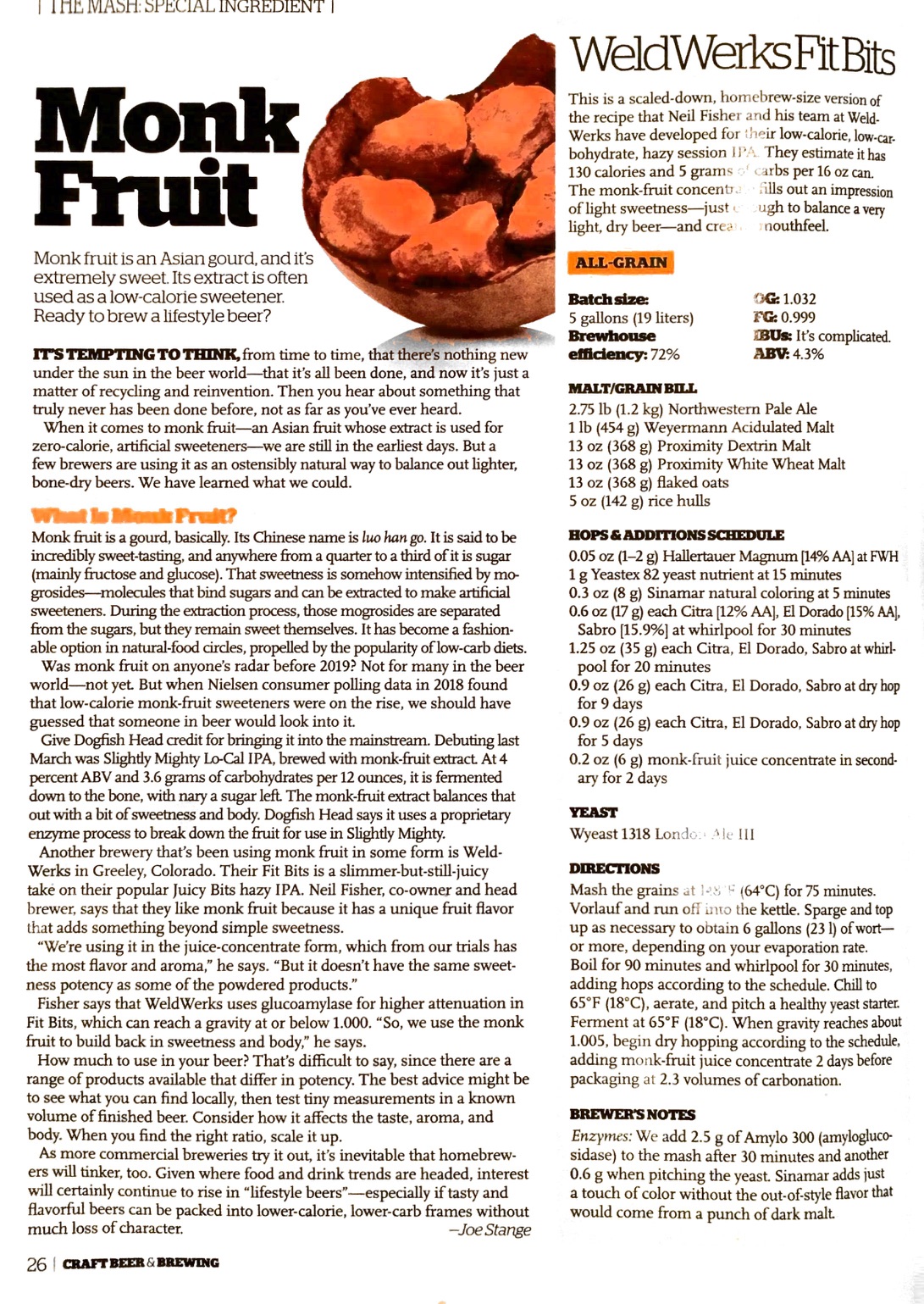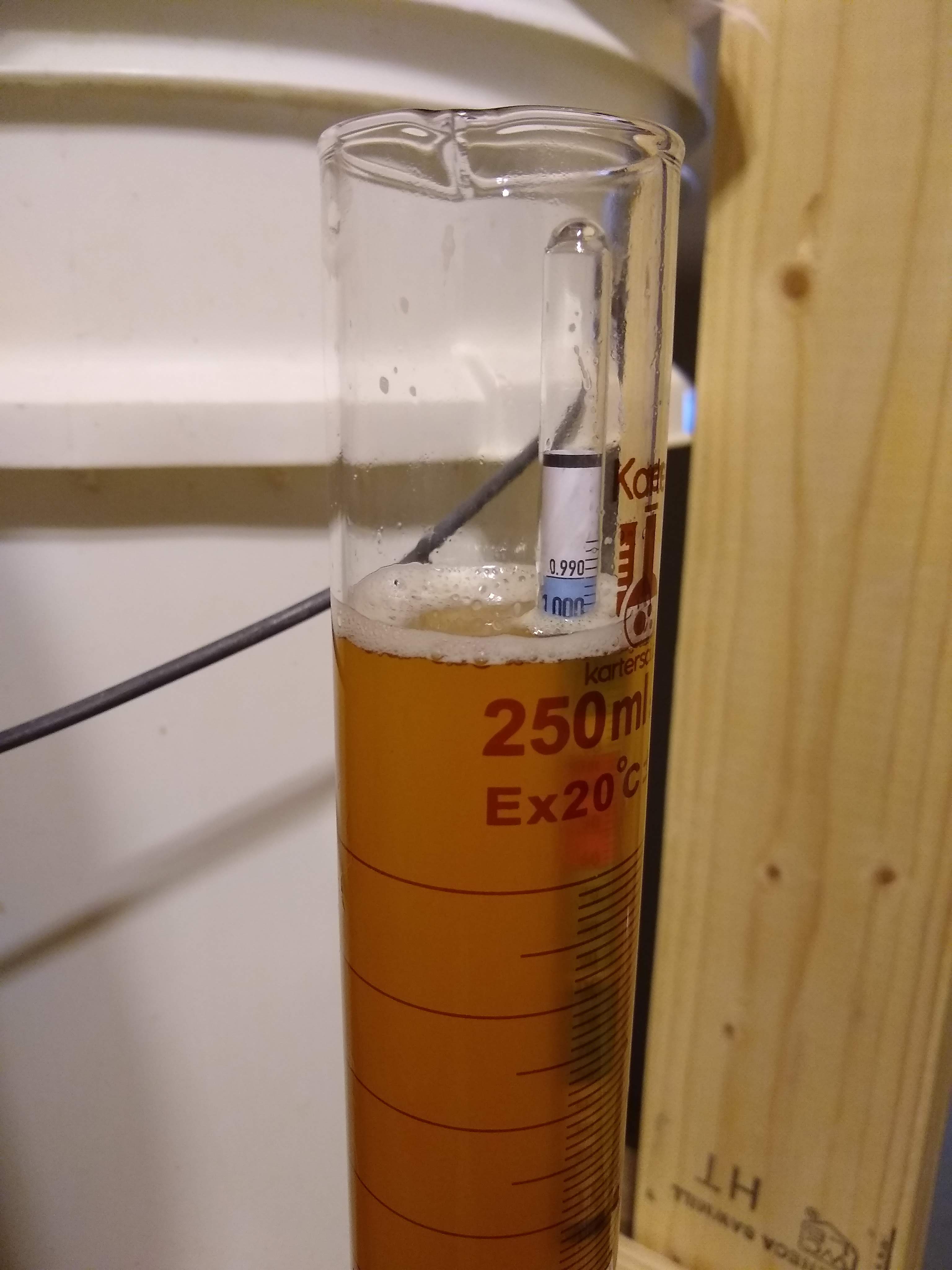To make a long story short... my girlfriend likes to drink low cal/low carb type stuff, and so to keep her on board with the home brewing, I'd like to make something that she would like. (She likes the taste and experience of full body beer, just doesn't do much of it because of the calories). With a single tap kegerator, whatever it is, I'll have to be able to at least tolerate it as well.
Of the stuff she's been drinking lately, my favorite is Oskar Blues One-y. "100 calorie hazy IPA". The way I'd describe it is a Brut NEIPA. Very dry, but with the tropical hop flavors.
Looking at Brut kit recipes, as I expected they all have the enzyme additions to completely dry them out to 1.000. Most of them seem to be in the 7+ percent alcohol range. So to keep the calories down and go for something similar to the One-y in the 4% range, I'm thinking of taking one of those recipes, and just scaling back the grain bill and bittering hops until it is 4% abv.
So that brings me to my question. These kits all have 10+$ worth of just liquid enzyme additions. Some are added in the boil, some in the fermenter early, some in the fermenter late, with no explanation of why.
Can someone explain what these different enzyme additions are doing, and why they are timed differently?
What I'd like to do is just use the Gluco crystals/powder since it is much cheaper than the liquid stuff, and add it whenever appropriate (I don't care when, but it seems opinions vary).
Thoughts on this plan? Thoughts on timing of these enzyme additions?
Thanks
Of the stuff she's been drinking lately, my favorite is Oskar Blues One-y. "100 calorie hazy IPA". The way I'd describe it is a Brut NEIPA. Very dry, but with the tropical hop flavors.
Looking at Brut kit recipes, as I expected they all have the enzyme additions to completely dry them out to 1.000. Most of them seem to be in the 7+ percent alcohol range. So to keep the calories down and go for something similar to the One-y in the 4% range, I'm thinking of taking one of those recipes, and just scaling back the grain bill and bittering hops until it is 4% abv.
So that brings me to my question. These kits all have 10+$ worth of just liquid enzyme additions. Some are added in the boil, some in the fermenter early, some in the fermenter late, with no explanation of why.
Can someone explain what these different enzyme additions are doing, and why they are timed differently?
What I'd like to do is just use the Gluco crystals/powder since it is much cheaper than the liquid stuff, and add it whenever appropriate (I don't care when, but it seems opinions vary).
Thoughts on this plan? Thoughts on timing of these enzyme additions?
Thanks
















![Craft A Brew - Safale S-04 Dry Yeast - Fermentis - English Ale Dry Yeast - For English and American Ales and Hard Apple Ciders - Ingredients for Home Brewing - Beer Making Supplies - [1 Pack]](https://m.media-amazon.com/images/I/41fVGNh6JfL._SL500_.jpg)












































